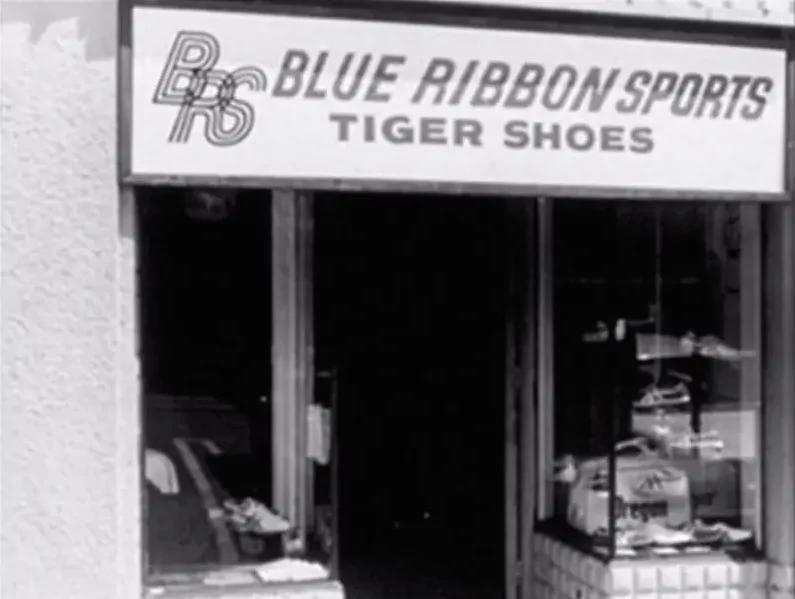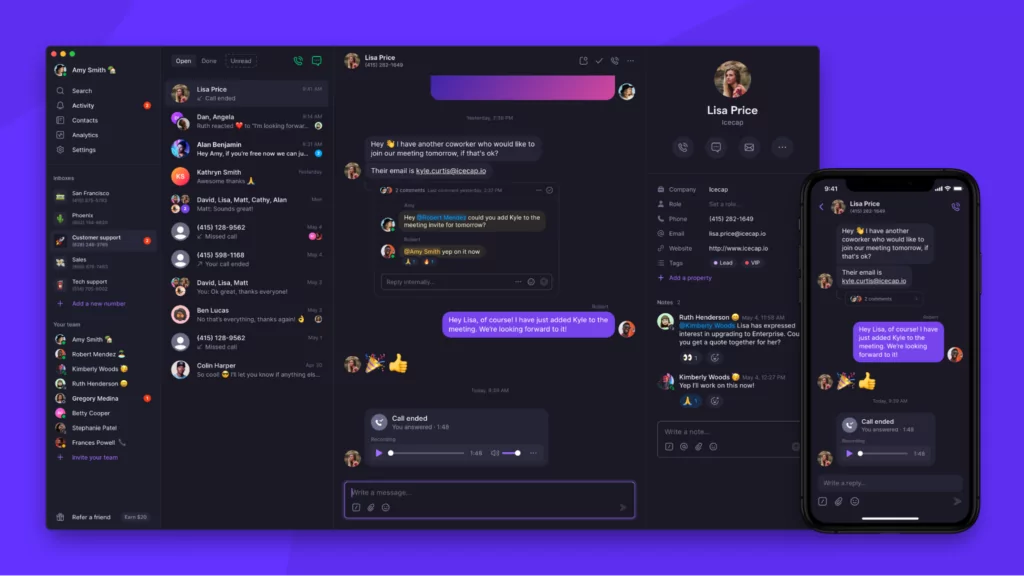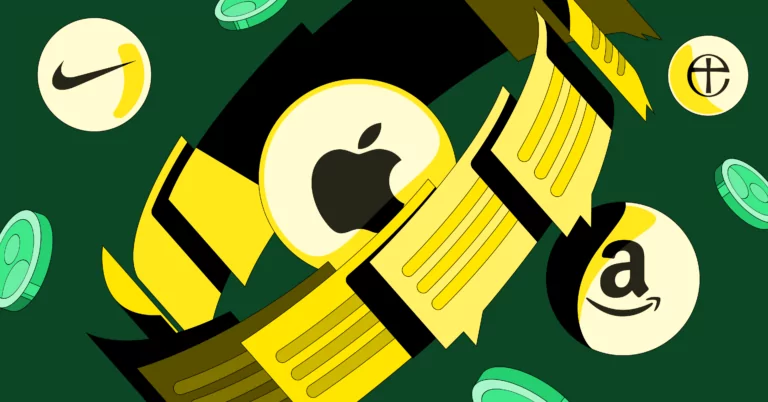As customers, we know what it feels like when we’re extremely engaged with a brand or a business. We anticipate product drops like it’s the night before Christmas. We eagerly tell our friends about the company. And like fans of sports teams or musical artists, we’re rooting for them and their success.
For instance, as an Apple user, I would not conceive of buying a digital product outside of the Apple ecosystem. On one hand, it would be inconvenient, on another hand, it would feel like cheating!
But even if you can recognize high engagement when you see it, if you’re a leader at a fast-growing business, you might not know where to start with customer engagement strategy. It can feel overwhelming and get pushed to the bottom of the priority list.
I’ve written about the Head-Hands-Heart customer engagement framework in the past, but in this article, I wanted to share real examples of customer engagement strategies used by some of the world’s most iconic companies. If you’re looking for a template to get started with customer engagement, these methods are a great place to start.
Leverage integrity like Amazon
A key part of building engagement for any business is integrity. There’s no shortcut to it: a customer asks for something, the business says they’ll do it, and then they do it.
You may not realize it, but Amazon does this every single time you place an order. When your order is processed, they send you an email saying the order has been placed. That’s contact #1. Then you get a second email when the payment has gone through. They then send you an email (and often a text message) saying the order has been dispatched. That’s #3. Then you get a fourth when it’s out for delivery. Then finally, they follow up again and send you an email and/or text once the order has been delivered. That’s contact #5!
What they are doing here is leveraging integrity, to build trust. They are communicating to say exactly what is going to happen, and to show that what they said would happen (your delivery) is happening, and then has happened. Even if you don’t like Amazon, you have to admit, people trust them, because they do what they say they will do!
It sounds basic, but many businesses fall short when it comes to doing what they say they’re going to do. Either the final product falls short of what customers asked for, or the business doesn’t communicate the value they’ve delivered, which reduces the engagement customers have with them.
Let me say that again: if you don’t communicate the value you’ve delivered, you risk missing out on engagement!
The Blueprint: Set expectations for your customers and fulfill them
- Look at your business offerings to see where you can set expectations for your customers. Maybe you can create an email flow after they’ve purchased a product from your store or a kickoff document at the start of a consulting engagement.
- As you go through the motions of delivering your product or services, regularly communicate with the customer about what you’re doing and when they can expect certain results.
- After you’ve delivered your product or service, remind customers of the expectations you set and how you fulfilled them.
While Amazon’s customer engagement strategy looks simple from the outside, getting to that level of consistency at scale is an extraordinary achievement. It wouldn’t be possible without buy-in from the very top of the organization. Customer Obsession is one of Amazon’s 14 leadership principles, and the company embodies this with its truly omnichannel customer experience — from chatbots that actually work, to Alexa’s voice-enabled technology, to in-store experiences, to those delivery texts and emails.
Sure, it’s easy to point to Amazon, being the behemoth that it is. But the insight I hope you get from this example is that your business doesn’t have to deliver products in one day or enable checkout with a swipe of your palm to be customer-obsessed. Trust can be built on the simple act of showing up where and when you said you would.
Build learning relationships like Nike
Friendships can be forged through the simple act of remembering someone’s name and some personal details about them. Customer relationships are no different.
As your customers spend more time with your brand, they come to expect a more personalized and tailored experience. It isn’t enough for service to just be consistent; it must improve and deepen over time – just like you expect any relationship to. This is the reciprocity aspect of customer engagement — customers will feel like they know you if you take steps to show that you know them.
Essentially, you need to build a learning relationship with every customer. You need to adapt to their journey and their needs and learn to work in the ways that suit them best.
In its early days, this is exactly what Nike did. Early employee Jeff Johnson was responsible for selling Nike’s first batch of shoes. Here’s how he built a manual system for forging deep relationships with Nike’s first customers:
Each new customer got his or her own index card, and each index card contained that customer’s personal information, shoe size, and shoe preferences. This database enabled Johnson to keep in touch with all his customers, at all times, and to keep them all feeling special.
He sent them Christmas cards. He sent them birthday cards. He sent them notes of congratulation after they completed a big race or marathon.
…Most wrote him back. They’d tell him about their lives, their troubles, their injuries, and Johnson would lavishly console, sympathize, and advise.1
The relationships that Johnson built with Nike customers went beyond fulfilling orders. He found common ground between the company’s values and their own, from running fanaticism to raising families.
If he can build a powerful database from letters and index cards, you can build one with modern tools.

One of Nike’s first stores, back when it was known as Blue Ribbon Sports and distributed Onitsuka Tiger shoes.
The Blueprint: Build custom profiles for your customers
- Create detailed digital profiles for your customers. Include non-professional information, such as hobbies and pets, so you can get to know who they are as people.
- Store profile information in an easily accessible, searchable place.
- Note down any special needs, requests, or problems.
- Regularly reference, build on, and refresh profile information so customers know you’re listening to them and value the relationship.
Successful businesses don’t always win because of innovation, excellence, or the amount of funding they have. Sometimes, listening to and understanding your customers is enough of a competitive advantage.
OpenPhone Team Tip: Build customer profiles in OpenPhone
OpenPhone’s lightweight CRM features — including contact notes and custom properties — help you enhance your customer profiles.
Is a contact traveling for a while? Save that information for your team so you can schedule calls with them after they’re back. Want to remember that your customer plays golf? Make a note of it so you ask them how their last game went.
OpenPhone automatically documents your interaction history with each customer so any agent, account manager, sales rep, or executive can pick up conversations using past context.
Design actionable next steps like the Church of England
Getting in front of your customers won’t translate to engagement without a strong call to action.
On a consulting project with the Church of England, we noticed that people were using the Church’s voice-enabled app to ask Alexa to say Grace at meal times. While it was clever —and totally organic — marketing and the app was getting loads of Alexa usage, the initial engagement didn’t lead to the eventual desired outcome: higher attendance at local churches.
I pointed out that while the Alexa function provided a seamless customer experience, the Church wasn’t following that positive interaction with a strong call to action. This meant that app engagement didn’t translate into real-life engagement in the form of church attendance.
By not adding a message to the audience along the lines of, “If you would like to attend a local church, we can recommend these local places,” they weren’t opening the door to potential attendees.
The Blueprint: Always provide a next step for your customers
- Look at all your customer communications and ask: does this message direct the customer toward a specific action?
- If it doesn’t, add a call to action to the message. The call to action should be aligned with specific business and marketing goals: subscribing to a newsletter, signing up for a free trial, attending a webinar or in-person event, etc.
- If the call to action doesn’t translate into increased engagement, try refining it by narrowing the scope of the action, changing the copy, or updating the design.
OpenPhone Team Tip: Give your team their next steps with OpenPhone
Try using OpenPhone’s AI call summaries to recap what was discussed and explore options for next steps.
AI-generated summaries give CX teams a clear list of next steps after every customer call to ensure that no action item will ever slip through the cracks again.
Standardize customer service interactions like Apple
Now I know what you‘re thinking, yes, Apple is another easy company to point to for examples. But give me a moment:
Steve Jobs famously said: “You’ve got to start with the customer experience and work back toward the technology, not the other way around.”
Customer experience has been an obsession of Apple’s since its founding, whereas its competitors still struggle with getting customer experience right. In fact, Apple won’t release a product or feature if the customer experience isn’t good enough – they’d rather delay, that do it badly.
One way they achieve this is how they standardize customer service interactions across the entire organization, from online support, to developer services, to the interactions Apple store employees have with customers.
The company uses the A.P.P.L.E framework for all of their CS interactions:
- A: Approach customers with a personalized, warm welcome.
- P: Probe politely to understand all the customer’s needs.
- P: Present a solution for the customer to take home today.
- L: Listen for and resolve any issues or concerns.
- E: End with a fond farewell and an invitation to return.
Apple’s documented process has many benefits. It does the work of quality control from the brand’s perspective, and it also provides comfort and consistency for consumers.
As the father of guerilla marketing Jay Conrad Levinson says, “Consistency breeds familiarity, familiarity breeds confidence, and confidence breeds sales.”2 When you deliver a consistent customer experience, you create a foundation of trust to build deeper engagement.
You’re already familiar with the customer journey at this point and, within that journey, where key customer actions occur. Service design is a way of developing and improving customer service around those key touchpoints to achieve certain business goals.
Within each touchpoint are many opportunities for members of your CS team to nurture engagement.
The Blueprint: Design a standard operating procedure for your customer service team
- Outline a few key moments (or “beats”) for your customer service team to hit in each interaction with a customer or prospect.
- Adjust the beats based on the type of interaction and the desired outcomes.
- Distribute the outline widely, explain its value to service team members, and reinforce it internally.
- Collect customer feedback and engagement data, and rework the operating procedure over time.
You don’t have to be Apple to wow your customers with a delightful experience. You just have to provide them with consistently good service.
Start engaging your customers the right way with OpenPhone

We’re lucky now to have more tools than ever at our disposal to engage customers. For instance, we don’t have to handwrite letters or sell shoes out of our cars, like Jeff Johnson at Nike did. Instead, we can call, text, message, and email customers whenever we like.
OpenPhone brings these crucial engagement channels under one roof to help businesses build consistent and long-lasting relationships with customers.
From building personalized customer profiles with custom properties and contact notes to integrating with powerful CRMs like Salesforce and HubSpot, deep customer knowledge is always at your fingertips.
From one workspace, you can establish a high standard of service that adapts to modern customer expectations, including auto-replies that let you respond to customers at any time of the day and AI summaries that distill long conversations into actionable takeaways.
Get started with OpenPhone today with a seven-day free trial.
1 Knight, Phil. Shoe Dog. Simon and Schuster, 26 Apr. 2016, pp. 67–68, books.apple.com/us/book/shoe-dog/id1052919171. Accessed 29 Nov. 2023.
2 Guerrilla Marketing: Cutting-edge strategies for the 21st century (ed. Hachette UK, 2011) – ISBN: 9780748131891

